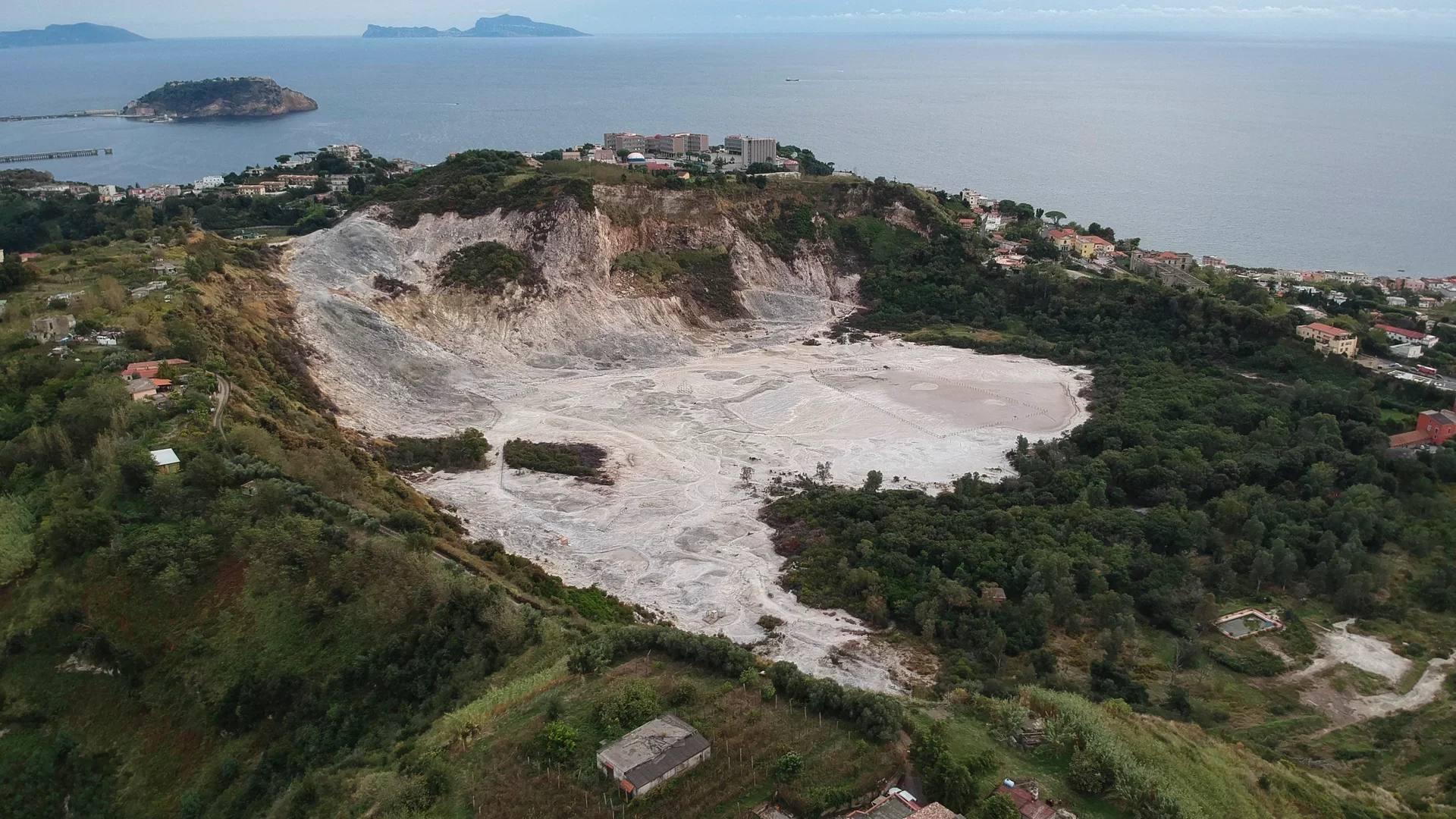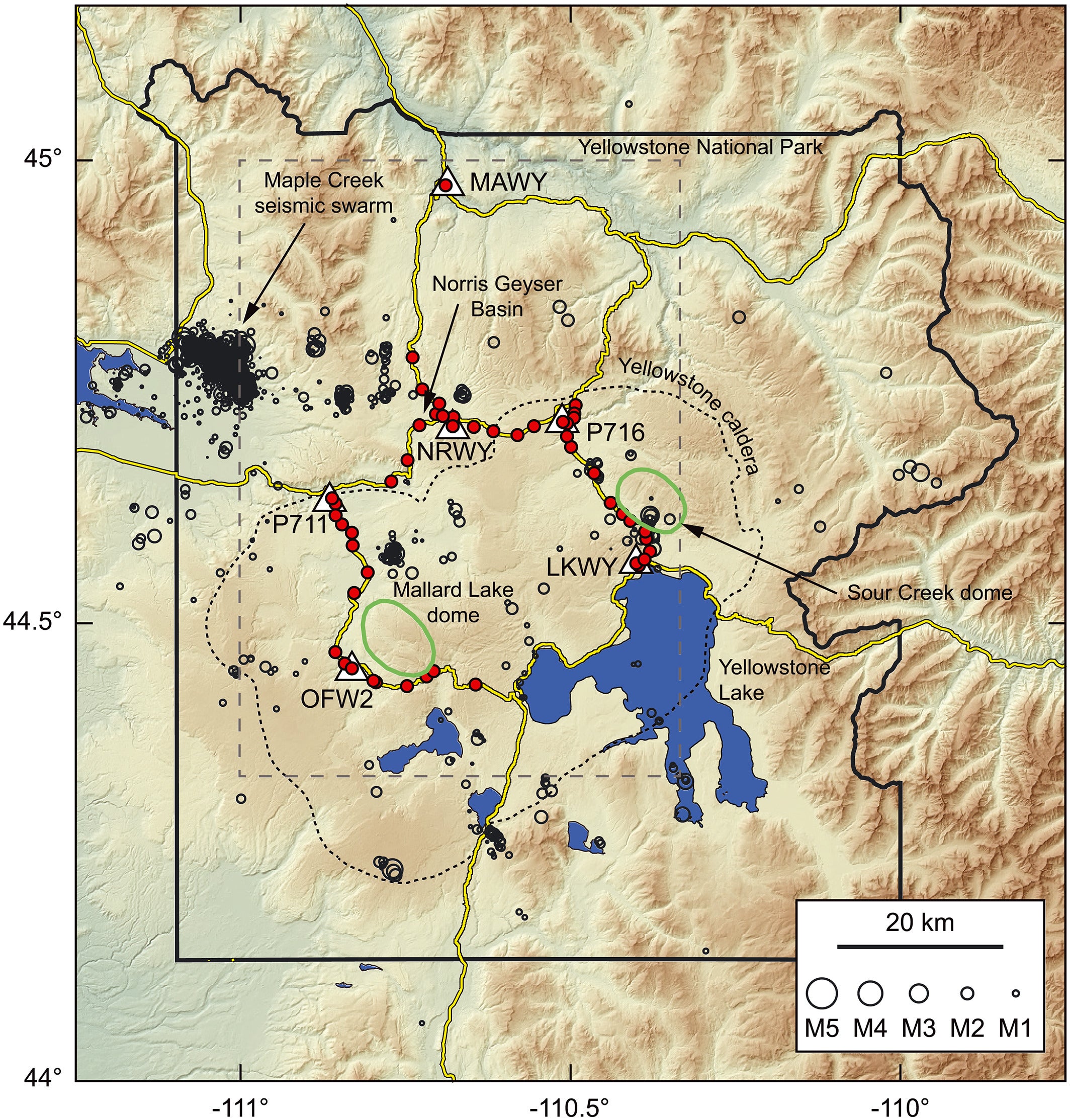Volcanoes, with their fiery eruptions and molten rivers, have captivated humanity for millennia. But some volcanoes lurk in silence, biding their time, and hold the potential for eruptions so vast they could reshape the world. These geological titans are known as supervolcanoes, and their study offers both fascinating insights and chilling warnings.
A supervolcano is not your average mountain spewing lava. These are volcanic systems capable of producing eruptions that eject more than 1,000 cubic kilometers of material—enough to bury entire cities under meters of ash.
Unlike cone-shaped volcanoes, supervolcanoes often appear as vast calderas, massive depressions formed when the volcano’s magma chamber collapses after an eruption.
Their eruptions are categorized as VEI-8 (Volcanic Explosivity Index), the highest rating on the scale. For context, the eruption of Mount Vesuvius that buried Pompeii was a mere VEI-5. Supervolcanoes don’t just devastate locally; they can trigger climatic shifts, disrupt agriculture, and cause a cascade of global effects.

Supervolcanoes exist on every continent, though some are better known than others. Among the most notable are:







Supervolcanoes are among Earth’s most awe-inspiring and dangerous features. While the odds of a supereruption occurring in any given year are slim, the consequences demand vigilance, international collaboration, and further research to mitigate their risks.
Related Stories
Supervolcanoes form over hot spots or at subduction zones, where tectonic plates collide. These regions allow magma to accumulate in chambers deep within the Earth. Over tens of thousands to millions of years, pressure builds as magma interacts with surrounding rock, becoming more viscous and gas-rich.
David Pyle, a volcanologist at the University of Oxford, explains, “It’s the combination of high magma viscosity and gas content that makes supervolcanoes so explosive. When they erupt, it’s like uncorking a shaken bottle of champagne—on a planetary scale.”
Yellowstone is a focal point for supervolcano research. The Yellowstone Volcano Observatory (YVO), managed by the U.S. Geological Survey (USGS), continuously monitors the region. Researchers employ a combination of seismographs, satellite imagery, and GPS sensors to track ground deformation, which can indicate magma movement.
In a recent study led by Dr. Michael Poland, YVO’s scientist-in-charge, researchers analyzed 20 years of data on Yellowstone’s ground uplift. The results, published in JGR Solid Earth, showed periodic inflation and deflation cycles, likely caused by magma and hydrothermal fluid migration.

“Yellowstone is dynamic but not currently eruptive,” Poland notes. “Our data suggests magma is replenishing, but at a pace far slower than would be necessary for an imminent eruption.”
At Toba, a team from the University of Cambridge used zircon crystals found in volcanic deposits to study magma accumulation. Dr. Clive Oppenheimer, a volcanologist on the team, explains, “Zircons are like time capsules. They tell us how long magma sits and evolves before an eruption. For Toba, it took thousands of years, which aligns with what we see at other supervolcanoes.”
Supervolcanoes don’t erupt often, but when they do, the results are catastrophic. An eruption like Yellowstone’s last major event, the Lava Creek eruption 640,000 years ago, would bury the western U.S. in meters of ash, destroy infrastructure, and make vast swaths of land uninhabitable.
Globally, the consequences would extend far beyond ashfall. Ash clouds would block sunlight, triggering a “volcanic winter.” Crops would fail, leading to food shortages. The cooling effect could last for years, disrupting weather patterns and ecosystems.
The Toba eruption offers a glimpse of these effects. Studies of ice cores and sediment suggest it caused a significant global temperature drop, potentially reducing human populations to as few as 10,000 individuals—a genetic bottleneck that shaped our evolution.
Yellowstone’s volcanic plumbing is a complex web of magma reservoirs, some partially molten and others solidified. Recent studies indicate the shallowest chamber is about 5–15% molten. While this doesn’t indicate an eruption is near, it underscores the potential for future activity. Jacob Lowenstern, a geologist formerly with YVO, emphasizes, “The goal isn’t to predict the next eruption but to understand the system well enough to reduce its risks.”
Locally, a Yellowstone eruption would obliterate everything within a 100-kilometer radius. Ashfall would extend thousands of kilometers, with the heaviest deposits in surrounding states like Montana, Idaho, and Wyoming.
Globally, the volcanic winter could lower temperatures by several degrees Celsius for a decade. Atmospheric scientist Alan Robock from Rutgers University simulated such scenarios in climate models. He warns, “The food supply chains we rely on are vulnerable. A volcanic winter could lead to widespread famine, even in regions far from the eruption.”
Advancements in technology are improving our ability to monitor supervolcanoes. AI is being used to analyze seismic data for early warning signs, while satellite imaging provides real-time views of ground deformation. Understanding these systems can also inform geothermal energy projects, such as harnessing Yellowstone’s vast heat for sustainable power.
Moreover, international collaborations are critical. The Global Volcanism Program compiles data from observatories worldwide, fostering a comprehensive approach to monitoring.
The study of supervolcanoes is not just about predicting the next eruption. It’s about understanding Earth’s dynamic processes and the interplay between geology, climate, and life. As Pyle notes, “Supervolcanoes remind us of our planet’s immense power and vulnerability. Their study is a humbling but essential endeavor.”
In the long term, research could help policymakers develop more robust disaster preparedness plans, from ash cleanup strategies to food security measures during prolonged global cooling.
Supervolcanoes are not mere relics of Earth’s past—they are active, evolving systems that demand our respect and vigilance.
While it’s clear supervolcanoes pose immense risks, the idea of preventing or mitigating an eruption has been a topic of increasing scientific interest. Though the concept might sound like science fiction, researchers are exploring ways to intervene in supervolcanic systems, aiming to reduce pressure in magma chambers or manage the thermal energy they produce. These efforts, while theoretical, represent a burgeoning area of study with promising implications.
One of the most discussed approaches is reducing the heat in a supervolcano’s magma chamber. This concept is particularly relevant to Yellowstone, where researchers from NASA’s Jet Propulsion Laboratory proposed a plan to use water to cool the magma and lower the risk of eruption.
The proposal involves drilling deep into the supervolcano’s crust and injecting water, which would circulate, absorb heat, and return to the surface as steam. This geothermal system could slowly cool the magma chamber over tens of thousands of years, potentially delaying or even preventing an eruption.
Dr. Brian Wilcox, a former NASA engineer, explained the concept in an interview: “By cooling the magma chamber, we can reduce its energy. If we do this gradually, we could safely stabilize the system and even harness geothermal power as a byproduct.”
However, this approach is not without its risks. Drilling into a magma chamber carries the potential to destabilize the system, triggering the very eruption scientists aim to prevent. “The margin for error is extremely narrow,” warns Wilcox.
Another idea under exploration involves relieving pressure within the magma chamber by creating controlled vents. This approach, akin to letting steam escape from a pressure cooker, would involve drilling boreholes into the chamber to release gases and magma incrementally.
Dr. Christopher Kilburn, a volcanologist at University College London, emphasizes the challenges: “The concept of venting is scientifically plausible, but the logistics and safety concerns are staggering. The last thing we want is to accidentally trigger an eruption.”
Advances in computational modeling are aiding the exploration of these ideas. Researchers use supercomputers to simulate the complex dynamics of magma chambers, helping to identify potential weak points and predict the effects of interventions.
A study published in Nature Communications by a team from ETH Zurich used these models to examine how cooling and venting might affect a magma chamber’s stability. Their findings suggest that interventions must be carefully calibrated to avoid catastrophic outcomes. “Our models show that even minor changes in pressure distribution can cause unexpected responses in the magma system,” said lead author Dr. Benoît Taisne.

The scientific community is divided on the feasibility of supervolcano intervention. Beyond the technical hurdles, there are ethical considerations to address. Intervening in a natural system as vast and complex as a supervolcano carries unforeseen risks, including the possibility of unintended environmental or seismic consequences.
“Should humanity even attempt to interfere with something as colossal as a supervolcano?” asks Dr. Pyle of the University of Oxford. “The risks of inaction are significant, but so are the risks of intervention.”
Efforts to develop supervolcano mitigation strategies require international collaboration. These volcanoes don’t adhere to borders, and their effects would be global. Establishing shared research platforms and funding opportunities is essential to advance the science while minimizing risks.
The U.N.’s Global Geoscience Initiative has identified supervolcanoes as a priority for its next decade of research funding, emphasizing the need for robust monitoring systems and experimental mitigation studies.
Mitigating supervolcanoes isn’t just about preventing rare but catastrophic eruptions. It’s about harnessing knowledge to better understand Earth’s processes and applying that knowledge to protect humanity. Whether these approaches will ever be viable remains uncertain, but each study adds another layer to our understanding of these hidden giants.
Dr. Poland of the Yellowstone Volcano Observatory summarizes it well: “Our goal is not to play God but to learn enough about these systems to coexist with them safely. If we can mitigate the risks while benefiting from geothermal energy, that’s a win for humanity.”
Supervolcanoes remain a reminder of Earth’s incredible power. Efforts to manage their potential will demand caution, ingenuity, and a global commitment to science.
Note: Materials provided above by The Brighter Side of News. Content may be edited for style and length.
Like these kind of feel good stories? Get The Brighter Side of News’ newsletter.
The post Scientists warn of growing danger from supervolcanoes appeared first on The Brighter Side of News.
Leave a comment
You must be logged in to post a comment.